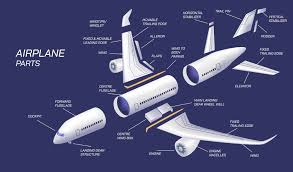The Importance Of Employee Benefits For Small Businesses: A Comprehensive Guide


Welcome to our comprehensive guide on the importance of employee benefits for small businesses! As a small business owner, you know that attracting and retaining top talent is crucial for the success of your company. And one way to do that is by offering a competitive benefits package.
In this guide, we’ll explore different types of small business employee benefits suitable for small businesses and provide valuable insights on selecting cost-effective options without compromising quality. We’ll also share tips on keeping up with changing benefit trends in order to stay ahead of the competition.So grab a cup of coffee (or tea!), sit back, and let us take you through everything you need to know about creating an attractive package that will make your employees feel valued and motivated! Let’s dive in!
Why Employee Benefits Matter For Small Businesses
- Talent Attraction and Retention: Offering benefits like health insurance, retirement plans, or flexible work arrangements helps attract top talent. Moreover, it encourages them to stay with the company, reducing turnover rates.
- Competitive Edge: Providing benefits can give smaller businesses a competitive advantage over larger companies, allowing them to compete for skilled workers in a tight labor market.
- Employee Well-being and Productivity: Benefits contribute to the overall well-being of employees. When employees feel supported with healthcare, paid time off, or wellness programs, they are generally happier, healthier, and more productive at work.
- Legal Compliance and Obligations: Some benefits, such as certain types of insurance or retirement plans, might be required by law depending on the size of the business or its location. Complying with these regulations avoids legal issues and potential penalties.
- Cost Savings in the Long Run: While offering benefits might seem expensive upfront, it can save money in the long run by reducing turnover costs. Hiring and training new employees due to high turnover rates can be significantly more expensive than retaining existing, skilled workers through benefits.
- Enhanced Company Culture: Benefits can contribute to a positive company culture. When employees feel valued and supported, they’re more likely to be engaged and committed to the company’s goals.
- Tax Incentives: Some employee benefits may qualify for tax deductions, providing a financial incentive for small businesses to offer these benefits.
Types of Employee Benefits
- Health Insurance: Covers medical expenses, including doctor visits, hospitalization, and prescriptions. It can include dental, vision, and mental health coverage.
- Retirement Plans: Such as 401(k) plans, where employees can contribute a portion of their salary, often with employer matching contributions, to save for retirement.
- Paid Time Off (PTO): Includes vacation days, sick leave, and holidays, allowing employees to take time off without losing income.
- Flexible Work Arrangements: Offer flexibility in work hours or remote work options, accommodating employees’ needs for better work-life balance.
- Life and Disability Insurance: Provides financial protection in case of death or disability, ensuring financial stability for employees and their families.
- Wellness Programs: Encourage healthy behaviors and lifestyles through initiatives like gym memberships, wellness coaching, or mental health support.
- Parental Leave: https://tignerfinancial.com Offers paid time off for new parents, whether for maternity, paternity, or adoption, to bond with their children and manage family needs.
- Education Assistance: Helps employees further their education through tuition reimbursement, scholarships, or programs that support ongoing learning and skill development.
- Employee Assistance Programs (EAP): Offer counseling, mental health support, and resources to help employees manage personal or work-related challenges.
- Transportation Benefits: Subsidies or pre-tax contributions for commuting expenses, like public transportation or parking costs.
How To Choose The Right Benefits For Your Business
Once you have a clear understanding of what your employees value most, you can start exploring different benefit options. Health insurance is often at the top of the list for many employees, so it’s important to research different plans and providers to find one that fits within your budget.
In addition to health insurance, other popular benefits include retirement plans, paid time off, flexible work schedules, and professional development opportunities. However, not all benefits will be suitable for every business. You should carefully evaluate each option based on its cost-effectiveness and potential impact on employee satisfaction and retention.
It’s also worth considering non-traditional benefits such as wellness programs or employee assistance programs (EAPs). These types of benefits can help improve overall well-being and create a positive work environment.
Choosing the right benefits requires thoughtful consideration of both your employees’ needs and your company’s financial capabilities. By taking these factors into account and staying up-to-date with changing benefit trends in your industry, you’ll be able to create a competitive package that attracts top talent while keeping costs manageable.
Cost-Effective Options For Small Businesses
When it comes to providing employee benefits, small businesses often face budget constraints. However, this doesn’t mean that they can’t offer attractive and valuable benefits packages to their employees. With a little creativity and strategic thinking, small businesses can find cost-effective options that still make a big impact.
https://tignerfinancial.com/how-to-go-about-getting-employee-benefits-for-a-small-business One option is to consider offering voluntary benefits. These are additional perks that employees can choose to pay for themselves, which means the cost burden is shifted from the employer to the employee. Examples of voluntary benefits include supplemental insurance plans, discounted gym memberships, or even pet insurance.
Small businesses can also explore partnerships with local vendors or service providers to offer discounts or special deals exclusively for their employees. This not only adds value to the benefits package but also supports other local businesses in the community.
Small businesses should regularly review their benefits offerings and consider negotiating better rates with benefit providers or switching providers altogether if necessary. The market is constantly evolving, so staying informed about new benefit trends and competitive pricing is crucial.
Tips for Keeping Up with Changing Benefit Trends
- 1. Stay Informed: One of the most important tips for small businesses to keep up with changing benefit trends is to stay informed. This means regularly reading industry publications, attending conferences and webinars, and networking with other professionals in your field. By staying up-to-date on the latest trends and best practices, you can ensure that your employee benefits package remains competitive.
- 2. Listen to Your Employees: It’s important to listen to your employees’ needs and preferences when it comes to their benefits. Conduct regular surveys or hold focus groups to gather feedback on what benefits are most valued by your workforce. By taking their input into consideration, you can make more informed decisions about which benefits to offer.
- 3. Be Flexible: With changing benefit trends, flexibility is key. Consider offering a flexible work schedule or remote work options as part of your employee benefits package. These perks can be highly attractive for many employees who value work-life balance.
- 4. Embrace Technology: Technology plays a major role in shaping modern workplaces, including employee benefits programs. Explore digital solutions such as online enrollment platforms or mobile apps that allow employees easy access to information about their benefits.
- 5. Review Regularly: Benefit trends evolve rapidly, so it’s crucial for small businesses to regularly review and update their offerings accordingly. Set aside time each year or every few years (depending on the pace of change in your industry) to assess whether any adjustments need to be made.
Case Studies: Successful Implementation Of Employee Benefits In Small Businesses
Case Study 1: XYZ Tech Solutions
XYZ Tech Solutions, a small software development company with only 20 employees, recognized the importance of attracting and retaining top talent in their industry. They decided to offer a comprehensive small business employee benefits package including health insurance, retirement plans, and flexible work hours. As a result, they saw increased employee satisfaction and loyalty. Their turnover rate decreased significantly, saving them time and money on recruitment efforts.
Case Study 2: ABC Marketing Agency
ABC Marketing Agency wanted to create a positive work environment that would foster creativity and collaboration among their team members. They introduced unique perks such as free gym memberships, catered lunches twice a week, and quarterly team-building activities. These benefits helped boost employee morale and productivity while also enhancing the company’s reputation as an employer of choice in their industry.
Case Study 3: DEF Manufacturing Co.
DEF Manufacturing Co., a family-owned business operating for over three decades, faced challenges with keeping up with changing benefit trends. To address this issue, they conducted regular surveys to gather feedback from employees about their needs and preferences regarding benefits packages. Armed with this information, they were able to tailor their offerings accordingly. This personalized approach not only improved employee satisfaction but also allowed DEF Manufacturing Co. to attract skilled workers who appreciated the customized benefits options.
Conclusion
In today’s competitive business landscape, small businesses face numerous challenges when it comes to attracting and retaining top talent. However, by offering comprehensive employee benefits packages, these businesses can level the playing field and create a workplace environment that is not only enticing but also supportive of their employees’ needs.
Employee benefits matter for small businesses because they contribute to employee satisfaction and engagement, which ultimately leads to increased productivity and retention rates. By providing benefits such as health insurance, retirement plans, paid time off, and flexible work arrangements, small businesses can demonstrate their commitment to the well-being of their employees.
Real-life case studies have shown how successful implementation of employee benefits has positively impacted small businesses. From improved recruitment efforts to higher job satisfaction levels among employees – investing in comprehensive benefit programs has proven time and again its value for both employers and workers alike.




